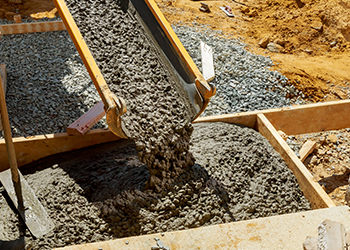| Standard | Covered Aspect | Specification (Latest Revision) |
|---|---|---|
| IS 269:2015 | Ordinary Portland cement | VI |
| IS 455:2015 | Portland slag cement | V |
| IS 1489 (Part 1):2015 | Portland Pozzolana cement | IV |
| IS 1489 (Part 2):2015 | Portland Pozzolana cement | IV |
| IS 3466:1988 | Masonry cement | II |
| IS 6452:1989 | High alumina cement for structural use | I |
| IS 6909:1990 | Super sulphated cement | I |
| IS 8041:1990 | Rapid hardening Portland cement | II |
| IS 8042:2015 | White Portland cement | III |
| IS 8043:1991 | Hydrophobic Portland cement | II |
| IS 8229:1986 | Oil-well cement | I |
| IS 12330:1988 | Sulphate resisting Portland cement | |
| IS 12600:1989 | Low heat Portland cement | |
| IS 16415:2015 | Composite cement |
| Product | Covered Aspect | Standard |
|---|---|---|
| Clinker and Hydraulic Cements | Fineness by sieving | IS4031:1996 (Part 1) |
| Specific surface area by Blaine Air permeability method | IS4031:1999 (Part 2) | |
| Soundness-Le Chatelier, Autoclave | IS4031:1988 (Part 3) | |
| Standard Consistency | IS4031:1988 (Part 4) | |
| Initial Setting time | IS4031:1988 (Part 5) | |
| Final settling time | IS4031:1988 (Part 5) | |
| Compressive strength | IS4031:1988 (Part 6) | |
| Compressive strength of masonry cement | IS4031:1988 (Part 7) | |
| Transverse & compressive strength of plastic mortar using prism | IS4031:1988 (Part 8) | |
| Heat of hydration | IS4031:1988 (Part 9) | |
| Drying shrinkage | IS4031:1988 (Part 10) | |
| Density | IS4031:1988 (Part11) | |
| Air content of hydraulic cement | IS4031:1988 (Part 12) | |
| Measurement of water retentivity of masonry cement | IS4031:1988 (Part 13) | |
| Determination of false Set | IS4031:1989 (Part 14) | |
| Determination of fineness by wet sieving | IS4031:1991 (Part 15) |

Quality control is a very crucial aspect for businesses to establish a minimum performance protocol and ensure strict adherence to safety requirements. The quality control system also makes sure that products, processes and overall functions perform steadily. Various Government agencies introduce regulatory guidelines from time to time to ensure standard compliances across all sectoral domains. In India, the Bureau of Indian Standards (BIS) is responsible for the development and compliance of various standards on products or services across all sectors. This helps in facilitating a level playing field and a common understanding of a product. Additionally, several cement companies in India have adopted voluntary protocols and practices to establish best practices and do demonstrate a sustainability conscious business leadership.
Notable benefits of having a set of specified standards are as follows1:
The development of any new product is always associated with market acceptability related risks. Availability of quality standards and product adherence to the same brings a sense of assurance amongst the consumers with the use of a new product(s).
Example: Over the past two decades, the Indian Cement Industry has been able to swiftly replace the OPC product with environment friendly blended cement types. This has been made possible on account of persistent innovation by the Indian cement companies and complementing product quality standards. Availability of standards led to better acceptability among the consumers and encouraged cement companies to develop low footprint products without compromising on the quality and utility at the end use.
Standards bring uniformity among similar products, which in turnenable seamless development of the domestic market and overseas trade opportunities. It imparts common understanding across different brands and product variants.
Example: With its adherence to ISO standards on quality and environmental performance, the Indian Cement Companies are proudly communicating their prowess in best practices in cement manufacturing. This also enables the acceptability of compliant products across different economic zones and geographies.
Regulations and standards enabling optimisation of natural resources and higher productivity facilitate the application of state of art technology and best practices. The Indian Cement Industry has always been proactive in the adoption of energy and resource efficient operations.In fact, the Indian cement companies have overachieved their energy efficiency improvement targets assigned to them through the Perform, Achieve and Trade (PAT) programme.
The Cement (Quality Control) Order 2003 2 prohibits manufacture, sale and distribution of cement, which does not conform to the Bureau of Indian Standards (BIS) specifications and does not bear the standard mark. Table 1 enlists 13 standards pertaining to the cement industry.
The quality of cement depends on a variety of factors, including technology; fuel and raw material characteristics, plant operations and quality control procedures, among others. Table 2 enlists physical attributes that have been standardised for cement powders, cement pastes and mortars.
The chemical composition of cement is an important factor to determine its performance across various applications. Table enlists chemical attributes that are verified for cementitious materials.
| Product | Covered Aspect | Specification (Latest Revision) |
|---|---|---|
| Clinker, Hydraulic Cements, GBFS, copper slag, steel slag and lead zinc slag | Loss on ignition, SiO2, Al2O3, Fe2O3, CaO, MgO. SO3, Insoluble residue, sulphur as sulphide, Free lime, Na2O, K2O, Cl | IS4032:1985 |
| TiO2, Mn2O3, MnO, P2O5, Phosphorus | IS12423:1988 | |
| Glass content | IS12089:1987 | |
| Clinker & Hydraulic Cements (Instrumental method – X Ray Fluorescence Spectrometer) | SiO2, Al2O3, Fe2O3, CaO, MgO. SO3, Na2O, K2O, Cl, TiO2, Mn2O3, MnO, P2O5, Cr2O3 | IS12803:1989 |
Quality Standards are necessary to maintain consistent quality, ensure safety measures and promote active trade across various geographies. A periodic reassessment of all standards ensures continued alignment with national priorities and suitable alignment with the global economies, particularly with the evolving standards being increasingly performance led.